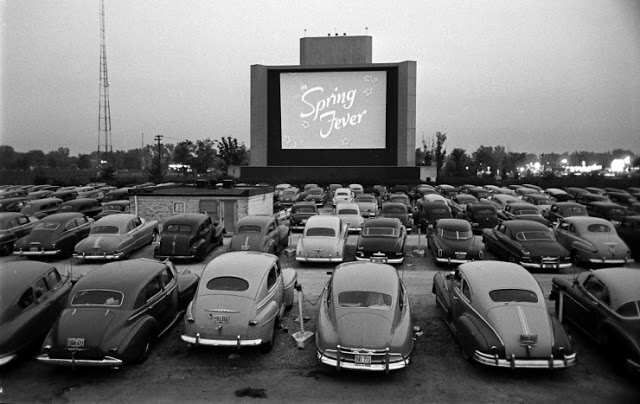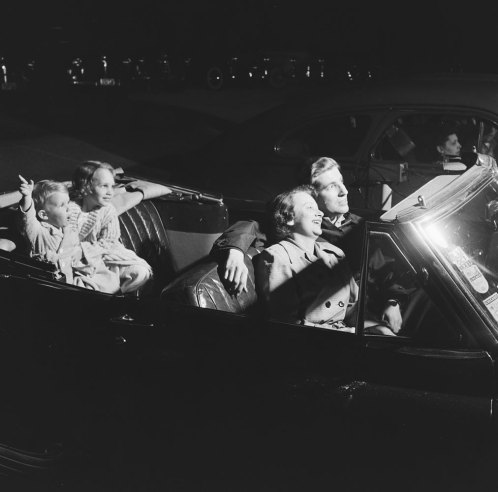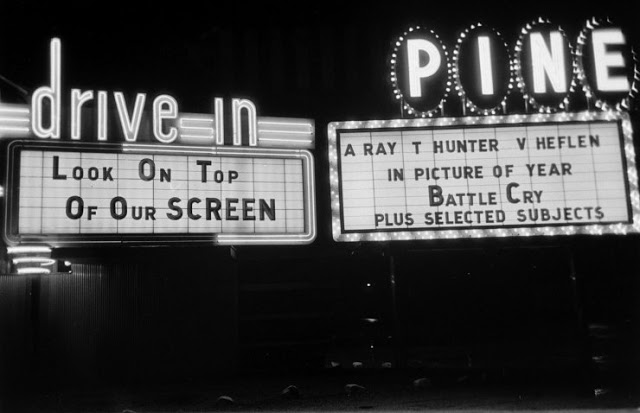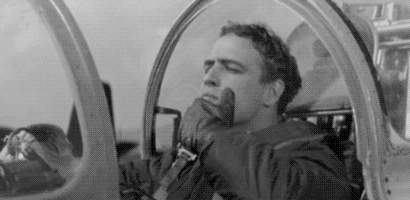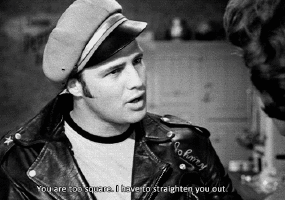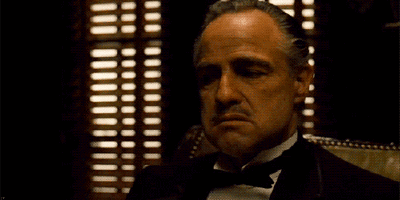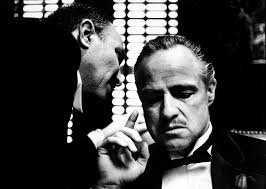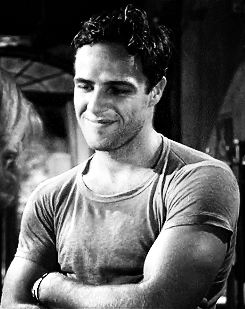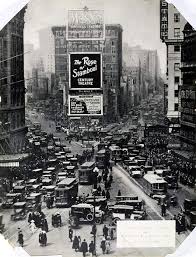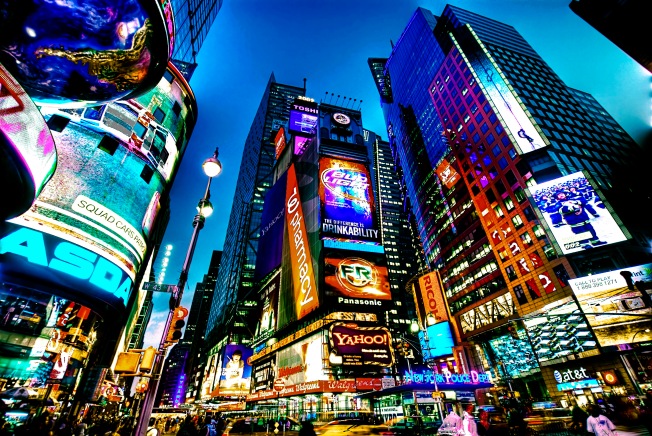Tag Archives: movies
11 Authors Who Hated the Movie Versions of Their Book
11 Authors Who Hated the Movie Versions of Their Book

Some of the most beloved movies ever were based on books. But just because we loved them doesn’t mean the original author did.
1. P.L. TRAVERS // MARY POPPINS
Disney’s Mary Poppins might be a cherished childhood memory for a lot of us, but for author P.L. Travers, it was a complete slap in the face. Despite having script approval, Travers’ edits were largely disregarded. Travers loathed the movie’s animated sequences and was perturbed that Mary Poppins’ strict side was downplayed. After some heated meetings, Travers reluctantly approved. She would have been shunned from the star-studded premiere had she not shamed a Disney exec into an invite. The 65-year-old Travers spent most of the movie crying and ultimately refused to let Disney touch the rest of the series. This later became a movie—Saving Mr. Banks—with Tom Hanks playing Walt Disney. And a Poppins sequel is in the works.
2. STEPHEN KING // THE SHINING

Stephen King probably made movie buffs cringe when he said he hated what Stanley Kubrick did to The Shining.
“I’d admired Kubrick for a long time and had great expectations for the project, but I was deeply disappointed in the end result. … Kubrick just couldn’t grasp the sheer inhuman evil of The Overlook Hotel. So he looked, instead, for evil in the characters and made the film into a domestic tragedy with only vaguely supernatural overtones. That was the basic flaw: because he couldn’t believe, he couldn’t make the film believable to others.” He was also unhappy with Jack Nicholson’s performance—King wanted it to be clear that Jack Torrance wasn’t crazy until he got to the hotel and felt that Nicholson made the character crazy from the start. King recently described the movie as “a big, beautiful Cadillac with no engine inside it.” With director Mick Garris, King ended up working on another version of The Shining that aired on ABC in 1997.
3. ANNE RICE // INTERVIEW WITH THE VAMPIRE

After casting was completed for the movie version of Anne Rice’s Interview with the Vampire, she said Tom Cruise was “no more my vampire Lestat than Edward G. Robinson is Rhett Butler.” The casting was “so bizarre,” she said, “it’s almost impossible to imagine how it’s going to work.” When she saw the movie, however, she actually loved Cruise’s portrayal and told him what an impressive job he had done. She still hasn’t come around to liking Queen of the Damned, though, telling her Facebook fans to avoid seeing the film that “mutilated” her books.
4. WINSTON GROOM // FORREST GUMP

Note to filmmakers: don’t anger the author of the book before the sequel has been written. Unhappy with the way Hollywood treated Forrest Gump by omitting plot points and sanitizing some of the language and sex, author Winston Groom started its sequel with the lines, “Don’t never let nobody make a movie of your life’s story,” and “Whether they get it right or wrong, it don’t matter.” You can’t blame Groom for being mad: he sued for the 3% net profits his contract promised him, which he hadn’t received because producers claimed that by the time they took out production costs and advertising and promotional costs, the movie didn’t turn a profit. To add insult to injury, Groom wasn’t mentioned in any of the six Academy Award acceptance speeches given by various cast and crew members of Forrest Gump.
5. CLIVE CUSSLER // SAHARA

Clive Cussler’s Dirk Pitt tales have a cult following. Dirk Pitt movies don’t, especially 2005’sSahara starring Matthew McConaughey and Penelope Cruz. In fact, it was a certified flop: the $145 million production made just $68 million at the box office. Cussler said it was because the producer failed to give him total script control as agreed upon and sued for $38 million. He lost. In fact, Cussler was ordered to pay $13.9 million for legal fees incurred by the Saharaproduction company. Though that order was overturned in 2010, it’s safe to say that Cussler probably won’t be pursuing that relationship again. By the way, the other Dirk Pitt movie adaptation, Raise the Titanic!, was also an epic stinker and was even nominated for the first ever Golden Raspberry Award (in multiple categories). Despite having the star presence of Oscar winners Jason Robards and Alec Guinness, the movie made back less than 20 percent of its $40 million budget.
6. J.D. SALINGER // MY FOOLISH HEART

There’s a reason no one has ever seen a big-screen version of Catcher in the Rye or Franny and Zooey. In the late ‘40s, J.D. Salinger consented to have his short story Uncle Wiggly in Connecticut made into a movie retitled My Foolish Heart. He was so mortified by the swooning love story that he swore his works would never be butchered again.
7. ANTHONY BURGESS // A CLOCKWORK ORANGE

Not only did Anthony Burgess dislike the movie based on his novella A Clockwork Orange, he later regretted writing any of it in the first place. “The book I am best known for, or only known for, is a novel I am prepared to repudiate: written a quarter of a century ago, a jeu d’esprit knocked off for money in three weeks, it became known as the raw material for a film which seemed to glorify sex and violence. The film made it easy for readers of the book to misunderstand what it was about, and the misunderstanding will pursue me till I die. I should not have written the book because of this danger of misinterpretation.”
8. BRET EASTON ELLIS // THE INFORMERS, AMERICAN PSYCHO

Bret Easton Ellis doesn’t think any of the film adaptations of his books are that great (save for maybe The Rules of Attraction), but he dislikes some more than others. Though he worked on 2009’s The Informers, he says, “That movie doesn’t work for a lot reasons but I don’t think any of those reasons are my fault.”
And Ellis believes American Psycho never should have happened: “American Psycho was a book I didn’t think needed to be turned into a movie. I think the problem with American Psychowas that it was conceived as a novel, as a literary work with a very unreliable narrator at the center of it and the medium of film demands answers. It demands answers. You can be as ambiguous as you want with a movie, but it doesn’t matter — we’re still looking at it. It’s still being answered for us visually. I don’t think American Psycho is particularly more interesting if you knew that he did it or think that it all happens in his head. I think the answer to that question makes the book infinitely less interesting.”
9. ROALD DAHL // WILLY WONKA & THE CHOCOLATE FACTORY

Ever wonder why Charlie and the Great Glass Elevator hasn’t followed in the silver screen footsteps of its predecessor, Charlie and the Chocolate Factory? Because Roald Dahl felt the movie version of his book was “crummy,” found Gene Wilder’s Willy Wonka to be “pretentious” and “bouncy,” and thought the director had “no talent or flair.” He vowed that film producers would never get their hands on the sequel to similarly ruin it, at least not in his lifetime.
10. KEN KESEY // ONE FLEW OVER THE CUCKOO’S NEST

Despite the fact that One Flew Over the Cuckoo’s Nest swept the Academy Awards—it won Best Picture, Best Director, Best Actor, Best Actress and Best Screenplay—author Ken Kesey was not impressed. He was originally slated to help with the production, but left two weeks into the process. Though he claimed for a long time that he didn’t even watch it and was especially upset that they didn’t keep the viewpoint of Chief Bromden, his wife later said that he was glad the movie was made.
11. RICHARD MATHESON // I AM LEGEND

Richard Matheson has been annoyed with the adaptations of his book I Am Legend since 1964. The first one, The Last Man on Earth, starred Vincent Price. “I was disappointed in The Last Man on Earth, even though they more or less followed my story. I think Vincent Price, whom I love in every one of his pictures that I wrote, was miscast. I also felt the direction was kind of poor.” Another version, The Omega Man, starred Charlton Heston. “The Omega Manwas so removed from my book that it didn’t even bother me,” Matheson said. And when I Am Legend starring Will Smith was announced, the author commented, “I don’t know why Hollywood is fascinated by my book when they never care to film it as I wrote it.” The most recent adaptation, by the way, completely changed Matheson’s ending because it didn’t test well with audiences.
#movies#authors#hated#http://beatnikhiway.com#ana_christy
DOCUMENTARIES I HAVE NEVER SEEN ON TV
Check this out: ‘Documentaries | Never Seen on TV’ – http://www.stumbleupon.com/su/1MJa2Y/:1zZ3YsTJ8:TdYZreWj
30 AMAZING STANLEY KUBRICK CINEMAGRAPHS
30 AMAZING STANLEY KUBRICK CINEMAGRAPHS
Stanley Kubrick was devoted to images, telling his stories as visually as possible. His images have an arresting power that few if any other directors can match. Dublin-based film critic Paul Lynch may have summed it up best speaking on A Clockwork Orange:
With colour, Kubrick found an alacrity and an arrest in his images that began to transcend the subject material of his stories…Those widescreen shots seem to push the natural boundaries of the screen, to absorb every photon of light. Kubrick wanted to do to his audiences what he did to Alex in A Clockwork Orange: to peel back our eyelids until we are forced to see every beam from the projector. He did not want us to blink.
There is a cold pedantry to his work, an unfeeling, ivory-tower vantage that, when married to the analytical care he took with his craft, can leave you feeling a little cold towards his films.
WHAT IS A CINEMAGRAPH?
Cinemagraphs are still photographs in which a minor and repeated movement action occurs. The term “cinemagraph” was coined by U.S. photographers Kevin Burg and Jamie Beck, who used the technique to animate their fashion and news photographs beginning in early 2011.
They are produced by taking a series of photographs or a video recording, and, using image editing software, compositing the photographs or the video frames into an animated GIF file in such a manner that motion in part of the subject between exposures (for example, a person’s dangling leg) is perceived as a repeating or continued motion. (See Tutorial Links at the end of this Article.)
Watch carefully some a very subtle.
IMAGES VIA: If we don’t, remember me.
LOLITA
DR. STRANGELOVE
2001: A SPACE ODYSSEY





A CLOCKWORK ORANGE






THE SHINING







FULL METAL JACKET



EYES WIDE SHUT

*A.I. ARTIFICIAL INTELLIGENCE

CINEMAGRAPH TUTORIALS:
#ana_christy#stanley_kubrick#beatnikhiway.com#cinemagraphs
HIWAY AMERICA- THE DRIVE IN MOVIE
|
|||||||||||
Advertising Ideas – Snack Bar Rico’s Nachos (Vintage Drive-In Movie Ad) – 1970shttps://youtu.be/AuVsGxox4QcDrive-In Movie Ads : Drive in Intermission 1960’shttps://youtu.be/26pQNKEOXjoBy Mary Bellis Richard Hollingshead was a young sales manager at his dad’s Whiz Auto Products, who had a hankering to invent something that combined his two interests: cars and movies. Richard Hollingshead’s vision was an open-air movie theater where moviegoers could watch from their own cars. He experimented in his own driveway at 212 Thomas Avenue, Camden, New Jersey. The inventor mounted a 1928 Kodak projector on the hood of his car, projected onto a screen he had nailed to trees in his backyard, and used a radio placed behind the screen for sound. The inventor subjected his beta drive-in to vigorous testing: for sound quality, for different weather conditions (Richard used a lawn sprinkler to imitate rain) and for figuring out how to park the patrons’ cars. Richard tried lining up the cars in his driveway, which created a problem with line of sight if one car was directly parked behind another car. By spacing cars at various distances and placing blocks and ramps under the front wheels of cars that were further away from the screen, Richard Hollingshead created the perfect parking arrangement for the drive-in movie theater experience. The first patent for the Drive-In Theater (United States Patent# 1,909,537) was issued on May 16, 1933. With an investment of $30,000, Richard opened the first drive-in on Tuesday June 6, 1933 at a location on Crescent Boulevard, Camden, New Jersey. The price of admission was 25 cents for the car and 25 cents per person. The design did not include the in-car speaker system we know today. The inventor contacted a company by the name of RCA Victor to provide the sound system, called “Directional Sound.” Three main speakers were mounted next to the screen that provided sound. The sound quality was not good for cars in the rear of the theater or for the surrounding neighbors. The largest drive-in theater in patron capacity was the All-Weather Drive-In of Copiague, New York. All-Weather had parking space for 2,500 cars, an indoor 1,200 seat viewing area, kid’s playground, a full service restaurant and a shuttle train that took customers from their cars and around the 28-acre theater lot. The two smallest drive-ins were the Harmony Drive-In of Harmony Pennsylvania and the Highway Drive-In of Bamberg, South Carolina. Both drive-ins could hold no more than 50 cars. An interesting innovation was the combination drive-in and fly-in theater. On June 3, 1948, Edward Brown, Junior opened the first theater for cars and small planes. Ed Brown’s Drive-In and Fly-In of Asbury Park, New Jersey had the capacity for 500 cars and 25 airplanes. An airfield was placed next to the drive-in and planes would taxi to the last row of the theater. When the movies were over, Brown provided a tow for the planes to be brought back to the airfield. The drive-in theater movie experience cannot be beat. all artwork Mary Bellis – (original photo source LOC) |
|||||||||||
COOL PEOPLE-MARLON BRANDO
Marlon Brando, 1924-2004: One of the Greatest Actors of All Time
Download MP3 (Right-click or option-click the link.)
I’m Faith Lapidus.
And, I’m Steve Ember with PEOPLE IN AMERICA in VOA Special English. Today, we tell about actor Marlon Brando. Many critics say he was the greatest actor of all time. And many actors say he influenced them more than any other person in the film industry.
There was no public service to honor Marlon Brando when he died in two thousand four at the age of eighty. The actor’s sister, Jocelyn Brando, said he would have hated such an event. The family held a small private ceremony instead.
Brando did not seek public attention when he was alive. He protected his private life. But he was a huge star. This, combined with his personal tragedies and his politics, made him a special target of the press.
Marlon Brando was born in Omaha, Nebraska in nineteen twenty-four. He was named after his father, a salesman, but his family called him Bud. His mother, Dorothy, was an actress in the local theater. He had two older sisters.
Marlon Brando’s childhood was not happy. His parents drank too much alcohol and argued often. Dorothy Brando blamed her husband for the failure of her acting career. The older Marlon Brando did not have a good relationship with his son. In a book about his life, the actor wrote that his father never had anything good to say about his son.
The Brandos moved many times when Marlon was young. His parents separated when he was eleven, but they re-united after two years. Young Marlon was always getting into trouble at school. His father decided to send him to a military school in Minnesota. Marlon did not do well in classes there. But he did find support for his interest in theater. A drama teacher urged him to begin acting in plays there and he did. But he was expelled from the school for getting into trouble.
Marlon Brando moved to New York City when he was nineteen years old in nineteen forty-three. He took acting classes at the New School for Social Research. One of his teachers was Stella Adler, who taught the “Method” style of realistic acting. The Method teaches actors how to use their own memories and emotions to identify with the characters they are playing.
#Marlon Brando learned the Method style quickly and easily. Critics say he was probably the greatest Method actor ever. One famous actress commented on his natural ability for it. She said teaching Marlon Brando the Method was like sending a tiger to jungle school.
Marlon Brando appeared in several plays. He got his first major part in a Broadway play in nineteen forty-seven, at the age of twenty-three. He received great praise for his powerful performance as Stanley Kowalski in the Tennessee Williams play, “A Streetcar Named Desire.”
His fame grew when he acted the same part in the movie version, released in nineteen fifty-one. Brando plays an angry working-class man. His wife’s sister, Blanche, comes to visit them in New Orleans, Louisiana. Blanche’s family used to be rich landowners but they lost all their property. Now she is mentally unstable. Stanley treats Blanche unkindly and insults her. Here, he tells Blanche what he thinks about women.
STANLEY: “I don’t go in for that stuff.”
BLANCHE: “What stuff?”
STANLEY: “Compliments to women about their looks. I never met a dame yet didn’t know if she was good-lookin’ or not without bein’ told. And there’s some of them that give themselves credit for more than they’ve got. I once went out with a dame who told me, ‘I’m the glamorous type’…she says ‘I am the glamorous type.’ I says ‘so what?'”
BLANCHE: “And what did she say then?”
STANLEY: “She didn’t say nothin’. I shut her up like a clam.”
“Streetcar” was Brando’s second film. He was nominated for an Academy Award for the performance. He was nominated for Oscars for his next two films as well. In nineteen fifty-two he played Mexican revolutionary leader Emiliano Zapata in the movie “Viva Zapata.” The following year he played Marc Antony in “Julius Caesar.”
Marlon Brando did not win an Oscar for Best Actor until nineteen fifty-four for the movie “On the Waterfront.” Many critics consider it his finest performance. The film’s director, Elia Kazan, said it was the best performance by a male actor in the history of film.
Brando plays Terry Malloy, a failed boxer. He informs on organized crime leaders, including his brother, Charlie. His brother had made him lose fights on purpose so Charlie could make money gambling on the fights. But now, Terry expresses his regrets about losing the fights.
TERRY MALLOY: “You don’t understand. I coulda had class. I coulda been a contender. I coulda been somebody instead of a bum which is what I am. Let’s face it.”
Marlon Brando acted in about forty movies. He was nominated for a total of eight Academy Awards. In his movies, he played a Japanese translator, a German Nazi military officer and the father of Superman. He even sang in a movie musical called “Guys and Dolls.”
His real life was as colorful as his many movie characters. His love life was especially active. He married actress Anna Kashfi in nineteen fifty-seven. The marriage had problems from the start. Their child, a son named Christian, was born a few months after they married. They separated the next year.
In nineteen sixty, Brando married Movita Castenada, a Mexican-American actress. They had two children before they separated in nineteen sixty-two. The same year, he married a Tahitian actress, Tarita. The two had met while filming the movie “Mutiny On the Bounty.”
Brando’s marriage to Tarita lasted ten years. But his love of Tahiti never ended. In nineteen sixty-six, he bought a small island near Tahiti. Brando divided his time between his island and his home in California for the rest of his life.
Critics say Marlon Brando began to suffer professionally during and after his work on “Mutiny on the Bounty.” Hollywood directors and producers considered him difficult to work with. Some critics said the actor appeared to be tired of acting.
But that changed in nineteen seventy-two when Brando appeared in “The Godfather.” At first, the film studio officials did not want Brando in the movie. But the director, Francis Ford Coppola, chose him for the part. The film was a major critical and financial success. Brando was praised for his performance as the Godfather, Vito Corleone, the powerful head of a criminal organization in New York City. He speaks to a man who wants the Godfather to have someone killed.
VITO CORLEONE: “If you’d come to me in friendship then this scum that ruined your daughter would be suffering this very day. And if by chance an honest man like yourself should make enemies, then they would become my enemies. And then they would fear you.”
Marlon Brando won the Best Actor Oscar for “The Godfather.” But he rejected it. He sent a woman named Sasheen Littlefeather to speak for him at the Academy Awards ceremony. She said that Brando could not accept the award because of the way the American film industry treated Native Americans. The people at the Academy Awards ceremony did not like the speech. But some experts think the action helped change the way American Indians were shown in movies.
Marlon Brando was also active in the civil rights movement. He spoke out against racism often and forcefully. He marched in demonstrations. And he gave money to civil rights groups.
Marlon Brando had two family tragedies. In nineteen ninety, his son, Christian, shot and killed a Tahitian man at the family’s home in California. The victim, Dag Drollet, was the boyfriend of Brando’s daughter, Cheyenne. Christian Brando said the killing was accidental. He was found guilty of responsibility in the death and served almost five years in prison.
During the trial, Marlon Brando told the court that he and Anna Kashfi had failed Christian as parents. He also apologized to the Drollet family and said he wished he could trade places with their son.
In nineteen ninety-five, Marlon Brando’s daughter Cheyenne killed herself. She had struggled with mental problems and was still depressed about the killing of her boyfriend.
Marlon Brando never made public statements about the death of his daughter. But reports said he blamed himself. He did not attend his daughter’s funeral in Tahiti.
In the following nine years, he made just four more movies. And the parts he played were small. But his influence on the American film industry was huge. When Marlon Brando died, many famous actors expressed regret. One of them said simply: “He was the best.”
This program was written and produced by Caty Weaver. I’m Steve Ember. And I’m Faith Lapidus. Join us again next week for another PEOPLE IN AMERICA in VOA Special English.
DOCUMENTARY-MARLON BRANDON
https://youtu.be/gasrbFAmdEo
A SCENE FRO A STREETCAR NAMED DESIRE 1951
https://youtu.be/UqhXBSW0Zns
Marlon Brando Wins Best Actor: 1955 Oscars
https://youtu.be/I_VJtDZBttY
MARLON BRANDO – OSCAR FOR THE GODFATHER
Sacheen Littlefeather refusing to accept the Best Actor Oscar® on behalf of Marlon Brando for his performance in “The Godfather” – the 45th Annual Academy Awards® in 1973. Liv Ullmann and Roger Moore presented the award.
https://youtu.be/2QUacU0I4yU
Apocalypse Now (6/8) Movie CLIP – Colonel Kurtz (1979) HD
https://youtu.be/3T-VAi2Xqq8
10 great movies to watch stoned on Netflix

10 great movies to watch stoned on Netflix
Stoners, meet our list of 10 great movies to watch stoned on Netflix!
If you use netflix outside the US, there is a useful browser plugin to give you access to the full library:Chrome, Firefox
Fear and Loathing in Las Vegas
 An oddball journalist and his psychopathic lawyer travel to Las Vegas for a series of psychedelic escapades.
An oddball journalist and his psychopathic lawyer travel to Las Vegas for a series of psychedelic escapades.
IMDB Rating: 7.6 – Genre: Adventure, Drama – Watch Fear and Loathing in Las Vegas on Netflix
Cheech & Chong’s Up In Smoke
 Two stoners unknowingly smuggle a van – made entirely of marijuana – from Mexico to L.A., with incompetent Sgt. Stedenko on their trail.
Two stoners unknowingly smuggle a van – made entirely of marijuana – from Mexico to L.A., with incompetent Sgt. Stedenko on their trail.
IMDB Rating: 6.8 – Genre: Comedy, Music – Watch Cheech & Chong’s Up In Smoke on Netflix
Pulp Fiction
 The lives of two mob hit men, a boxer, a gangster’s wife, and a pair of diner bandits intertwine in four tales of violence and redemption.
The lives of two mob hit men, a boxer, a gangster’s wife, and a pair of diner bandits intertwine in four tales of violence and redemption.
IMDB Rating: 9.0 – Genre: Crime, Thriller – Watch Pulp Fiction on Netflix
Super High Me
 Stand up comedian and marijuana user Doug Benson documents thirty days of pot free living and thirty days of non-stop use to compare the effects of both.
Stand up comedian and marijuana user Doug Benson documents thirty days of pot free living and thirty days of non-stop use to compare the effects of both.
IMDB Rating: 6.1 – Genre: Comedy, Documentary – Watch Super High Me on Netflix
Mr. Nice
 The life story of Howard Marks, an elite British drug smuggler.
The life story of Howard Marks, an elite British drug smuggler.
IMDB Rating: 6.2 – Genre: Biography, Comedy – Watch Mr. Nice on Netflix
Requiem for a Dream
 The drug-induced utopias of four Coney Island individuals are shattered when their addictions become stronger.
The drug-induced utopias of four Coney Island individuals are shattered when their addictions become stronger.
IMDB Rating: 8.4 – Genre: Drama – Watch Requiem for a Dream on Netflix
Apocalypse Now
 During the U.S.-Viet Nam War, Captain Willard is sent on a dangerous mission into Cambodia to assassinate a renegade colonel who has set himself up as a god among a local tribe.
During the U.S.-Viet Nam War, Captain Willard is sent on a dangerous mission into Cambodia to assassinate a renegade colonel who has set himself up as a god among a local tribe.
IMDB Rating: 8.6 – Genre: Drama, War – Watch Apocalypse Now on Netflix
Half Baked
 The story of three not so bright men who come up with a series of crazy schemes to get a friend out of jail.
The story of three not so bright men who come up with a series of crazy schemes to get a friend out of jail.
IMDB Rating: 6.4 – Genre: Comedy, Crime – Watch Half Baked on Netflix
Into the Wild
 After graduating from Emory University, top student and athlete Christopher McCandless abandons his possessions, gives his entire $24,000 savings account to charity and hitchhikes to Alaska to live in the wilderness. Along the way, Christopher encounters a series of characters that shape his life.
After graduating from Emory University, top student and athlete Christopher McCandless abandons his possessions, gives his entire $24,000 savings account to charity and hitchhikes to Alaska to live in the wilderness. Along the way, Christopher encounters a series of characters that shape his life.
IMDB Rating: 8.1 – Genre: Adventure, Biography – Watch Into the Wild on Netflix
Humboldt County
 A disillusioned medical student is stranded for a summer in a remote community of counterculture pot farmers, the last place in the world he imagined he would discover himself.
A disillusioned medical student is stranded for a summer in a remote community of counterculture pot farmers, the last place in the world he imagined he would discover himself.
IMDB Rating: 6.2 – Genre: Adventure, Biography – Humboldt County on Netflix
Have a suggestion? Think another movie should be on the list instead? Feel free to leave a comment below!
COOL PEOPLE- ONE LINERS FROM GROUCHO MARX
COOL PEOPLE- UMA THURMAN
- NAME
- Uma Thurman
- OCCUPATION
- Film Actress
- PLACE OF BIRTH
- Boston, Massachusetts
- FULL NAME
- Uma Karuna Thurman
- ZODIAC SIGN
- Taurus
Early Life and Career
Actress Uma Thurman was born on April 29, 1970, in Boston, Massachusetts. Named for a Hindu deity, Thurman made her film debut in Kiss Daddy Goodnight (1987), a low budget thriller. Her first well-known role was as Venus in Terry Gilliams’s The Adventures of Baron Munchausen (1988). Wearing only hair extensions in her brief performance as the Roman goddess of love, the alluring young actress went on to take a number of sexually charged roles over the next few years.
At age 18, she bared all in Dangerous Liasons (1988), a big-budget period piece starring John Malkovich and Glenn Close, and in 1989 starred in Henry and June, the first film to be released with an NC-17 (No Children Under 17) rating.Big Break
FILM CAREER
After a series of big budget projects, Thurman took a more “independent” tack, favoring a series of riskier projects including Woody Allen’s Sweet and Lowdown(1999), a Merchant/Ivory production of Henry James’ The Golden Bowl (2000) and Chelsea Walls (2001), directed by then-husband Ethan Hawke.
In 2003, she starred in Quentin Tarantino’s two-volume epic Kill Bill as a vengeful sword slashing assassin. The actress will also starred with Ben Affleck in the sci-fi thriller Paycheck. With 2005’s The Producers, Thurman took on musical comedy with Nathan Lane and Matthew Broderick.
But her humor missed its mark with My Super Ex-Girlfriend (2006), which proved to be a commercial and critical disappointment. Directed by Griffin Dunne, 2008’s The Accidental Husband also explored love and revenge. It featured Thurman as a radio talk show host who convinces a woman to break up with her boyfriend.
In recent years, Thurman has taken on a variety of roles, from playing a mythic monster in Percy Jackson & the Olympians: The Lightning Thief(2010) to a powerful Parisian woman in Bel Ami (2012). In Bel Ami, Thurman plays one of Robert Patterson’s love interests. She also had a recurring television role around this time, appearing on the musical drama Smash.
Personal Life
Thurman married British actor Gary Oldman in 1990. They divorced in 1992. In 1998, she married Gattaca co-star Ethan Hawke, and in the same year they welcomed their first child, Maya Ray Thurman-Hawke. In 2001, the couple had a son, Roan. Thurman and Hawke split up two years later and divorced in 2004. Thurman and boyfriend Arpad Busson welcomed a daughter on July 15, 2012.
BEATNIK HIWAY-TIMES SQUARE N.Y.C.
THE HISTORY OF TIMES SQUARE
Humanity Not at its Best, or Worst – but
at its Most
Times Square is the intersection of spectators and performers, tourists and locals; all the diversity of the city, the country, and the world interacting. Times Square accommodates many activities both planned and spontaneous, and connects streetscapes, underground passages, and penthouses. Finally there are the layers of history that lie under the streets and behind the facades of theaters, diners and stores. The density and the congestion are part of what is authentic to a place where art, life and commerce quite literally collide.
Much of what constitutes modern American culture has been invented and reinvented, tested, and displayed in the few blocks that make up the Times Square district. This is where Americans devise new ways to entertain themselves. By 1928, some 264 shows were produced in 76 theaters in Times Square. These theaters showcased not old-world opera, but the new popular culture born of America’s immigrant stew – vaudeville and musicals, jazz and the movies. Today it remains the busiest theater district in the world, and is also home to MTV, ABC, B.B. Kings, Hard Rock Cafe, Best Buy Theater, and Madame Tussaud’s.
The most popular spectacles of Times Square have always been free – the dazzling electrical signs that gave Broadway its reputation as “The Great White Way.” Over the course of the past hundred years, Times Square has become an outdoor laboratory for new ways to communicate and advertise.
Times Square is also where American news was made. It was here that writers like Walter Winchell and Damon Runyon perfected their punchy reporting style, the gossip column, and the use of slang, that redefined what news was – how it was to be written and reported, and what counted. Now ABC’s “Good Morning America,” Reuters, Viacom, Condé Naste, and of course the New York Times are all here.
Prostitution and sex theaters defined the area for much of the post-World War II era. In a larger sense, Times Square was a place where boundaries could be pushed, and broken, and desire expressed. It is no accident that, in Times Square, women could challenge the rules of dating, and gays and lesbians could find a greater level of freedom than they found elsewhere in the city.
Times Square blossomed in the first third of the twentieth century, only to slide into notorious decay in the face of the post-1945 world of television, suburbs, and racial strife. Times Square has returned in the past two decades. The crowds that first made the place have also returned, contributing to the unique mix of creativity and commerce, energy and edge that makes Times Square both an international icon and a universe in miniature, reflecting the obsessions, desires and priorities of a changing world.
Paul McCartney Pops Up in Times Square
The star plays four songs from his ‘New’ album at unannounced New York performance

PAUL MCCARTNEY PLAYES IN TIMES SQUARE
| October 10, 2013
Just 24 hours after playing a surprise show at a Queens high school auditorium, Paul McCartney gave another impromptu performance in New York’s Times Square today, delighting tourists and Midtown workers with four songs from his upcoming album New (due out next week).
McCartney alerted his fans around noon with a tweet: “Wow! Really excited to be playing New York Times Square at 1pm this afternoon!” By 12:45, a sizeable crowd had already gathered at Broadway and West 46th Street, where a large truck was parked blocking pedestrian traffic. Many of them were there to see McCartney, but more than a few could be heard asking what, exactly, was about to happen.
A few minutes after 1:00 p.m., McCartney and his band pulled up in a caravan of yellow taxicabs. The star emerged to huge cheers and climbed up into the truck – where a curtain had by now been pulled away to reveal a bare-bones stage, set up with instruments. “OK, we’re just going to do a few songs from my new album,” McCartney said as he took a seat at his multicolored piano. “Ready?”
Read All About ‘New’ and 25 More of This Fall’s Most Exciting Albums
A sea of cameras, phones and iPads followed McCartney as he began to sing the album’s lead single, “New,” smiling bright enough to make everyone forget the gray afternoon weather. “Well, this is something, isn’t it?” he said when it was done. “Let’s stay here all day!”
McCartney switched to his Hofner bass for “Save Us,” a fast-paced number that recalled Wings at their most rocking. Album promotion is a chore for some artists, but not for McCartney, who looked like there was nowhere else he’d rather be. “I’ll be putting a little hat out here later,” he joked. “We’re basically busking.”
His wife, Nancy Shevell, could be seen off to the side of the crowd dancing to the next song, “Everybody Out There” – a jangly anthem with McCartney on acoustic guitar. “There but for the grace of God go you / and I,” he sang. “Do some good before we say goodbye . . .” By song’s end, he’d broken into his trademark Little Richard howl.
“We’ve just been told we’ve only got one more,” McCartney said. “We’ve only got 15 minutes!” The crowd booed heartily, but he was in a goodnatured mood. “Mr. Andy Warhol predicted I’d get 15 minutes of fame,” he added with a grin. “This is it.”
With that, he returned to his piano and launched into one last song from the new LP: “Queenie Eye,” a psychedelic pub singalong. The song featured a sly wink to Beatles superfans: At one point, McCartney sang, “O-U-T spells ‘out’!” – just like on “Christmas Time (Is Here Again),” a fan-club exclusive recorded by the Beatles in 1967 and first released to the wider public as the B-side to 1994’s “Free As a Bird.”
And then, alas, it was time to go. “See you next time!” McCartney said brightly as he vanished back into the Manhattan crowd.
Read more: http://www.rollingstone.com/music/news/paul-mccartney-pops-up-in-times-square-20131010#ixzz39ijThPVf
Follow us: @rollingstone on Twitter | RollingStone on Facebook
HOW TIMES SQUARE WORKS
Adam Clark Estes
 EXPAND
EXPAND
When we stepped out onto the roof, the wind whipped me sideways, and it took me a second to get my bearings. I was nine stories above Times Square, staring at the back of its biggest LED sign, and it was thrilling.
Of course, standing on a dirty rooftop shouting over the cacophony of Midtown Manhattan is not thrilling in and of itself. I was with an engineer from D3 LED, one of the leading digital display manufacturers in the world, who was explaining to me how the sign worked. Gizmodo’s photo savant Michael Hession was wandering around, shutter snapping, and I was staring down into the guts of the 100-foot-wide LED display. As the engineer explained how the modular LED panels could be swapped out in seconds and the entire display switched with just a few key strokes, I straightened up.
“So you’re saying it’s just one big huge computer?” I asked.
He thought for a second and then nodded, “Pretty much.”

This is the back of the largest continuous surface LED display in Times Square. The blinking green lights mean that everything is working!
New York City’s Biggest Gadget
Times Square is one big, busy machine. Powered by American ingenuity and more than a few megawatts of electricity, these six square blocks stay bright 24 hours a day, seven days a week. You’ve seen Times Square in movies and on TV a million times. A lot of you have probably seen it in real life, teeming with chaos and glowing with capitalism. But how exactly does all that work? The shops and restaurants are one thing, but what exactly makes Times Square such a functional, perpetual spectacle?
That’s a complicated question. Obviously there are the workers themselves. Times Square supports some 385,000 jobs, a little over half of which are in that bright sliver of Midtown, while the other half are strewn across the country supporting Times Square operations from designing the content on the signs to keeping the power plants that power them on line. All together, they help generate about 11 percent of New York City’s economic output, or about $110 billion annually, according to the latest figures. These are the men and women who man the ticket booths, who sell the T-shirts, who clean the hotel rooms, and who keep everyone safe. And since about 350,000 pedestrians pass through Times Square on an average day—that number jumps to 460,000 on the busiest days—that’s no small task.
 EXPAND
EXPAND
We actually got to climb inside the sign that sits on top of the Double Tree hotel. It was as precarious and scary as it looks.
But then there’s the technology. Times Square is home to countless billboards, many of which are now digital, that make up some of the most expensive advertising real estate in the world. These signs are so central to the area’s identity that there’s actually a zoning code that requires all buildings on that stretch of Broadway to have at least one illuminated sign of a certain size. And while the buildings themselves aren’t too different than those found throughout the rest of Manhattan, Times Square does have that big ball.
Put simply, Times Square works thanks to a productive marriage of labor and technology. And what better manifestation of these two things than those countless billboards that turn night into day in the middle of Manhattan? They bring in tourists. They drive up real estate prices. They fuel innovation in media and advertising in a manner unlike any other place on Earth. Put simply: Times Square works as long as those signs are shining.
It Wasn’t Always Like This
Times Square was still considered countryside when John Jacob Astor started buying up real estate in the first half of the 19th century. By the beginning of the 20th century, the area—then known as Longacre Square—had been considerably built up, having become home to The New York Times as well as a subway stop (in that order). On April 9, 1904, the paper announced the new moniker with a bold headline: “Times Square Is the Name of City’s New Centre.” Three years later, in 1907, Times owner Adoph S. Ochs lowered an illuminated ball down a pole on the roof of One Times Square in the last minute of the year, a tradition that endures today. It was, arguably, the first electrified advertisement in Times Square.
A few decades later, Times Square had become the center of New York’s sin city. The theater district that had made the area an entertainment hub was eclipsed by the seedy strips of sex shops and adult cinemas. This, along with an ever-growing crime problem, is part of why the Timescalled the area around its former home “the ‘worst’ in town” by 1960. The slide into seediness continued through the 1970s and 1980s, eventually slowing with the election of Rudy Giuliani and an aggressive push to boost security and encourage tourists. That eventually meant those porn theaters had to close.
 EXPAND
EXPAND
“Seedy” is almost too gentle a word to describe Times Square in the 1980s.
Times Square was properly “Disneyfied” by the mid-1990s. While it’s widely believed that aggressive urban planning caused the rebirth of Times Square, the former head of New York’s Urban Development Corporation says that’s not quite right. “The changes in Times Square occurred despite government, not because of it,” wrote William J. Stern a few years ago. “Times Square succeeded for reasons that had little to do with our building and condemnation schemes and everything to do with government policy that allowed the market to do its work, the way development occurs every day nationwide.”
What better beacon of progress than a bunch of blinking—and eventually glowing—billboards. By the 2000s, Times Square had been transformed into a sort of shrine to capitalism, with mansion-sized signs beaming down onto pedestrian walkways that steered out-of-towners into chain stores and scared locals into staying downtown.
Times Square is safer than it’s ever been, safe enough to slurp a bowl of gumbo at Bubba Gump Shrimp well past midnight and then stroll onto brightly lit sidewalks without fear of getting mugged. Businesses are clearly thriving, and even the empty pedestrian walkways turn a tiny profit. It wasn’t just real estate developers, or extra security, or even Guy Fieri that transformed Times Square into the well oiled machine it is today. It was the millions of LEDs.
How LEDs Killed the Billboard
The thing about the signs in Times Square is that they never stay the same. Like the rest of America, the place is constantly reinventing itself through various innovations and a perpetual quest to grow bigger and become greater. So in the late 1990s, as LED technology was finally becoming affordable, Times Square became a testing ground for a revolutionary approach to display advertising.
D3 LED managing partner Meric Adriansen was one of the mad scientists in charge. Actually, he’s an engineer who was working in Disney’s fabled research arm before he got recruited to help design a new kind of sign for ABC in 1998. The network was preparing to move the fledgling Good Morning America franchise from Lincoln Center for Times Square, and it wanted a bright, splashy sign to announce the show’s presence to every passerby. The vision was to create a ribbon of sorts that wrapped around the corner of the the new Times Square Studios at the corner of West 44th Street and Broadway, where they could broadcast breaking news and the like. It was not an easy place to put an interactive display, especially with the state of technology at the time.
 EXPAND
EXPAND
While the ribbon-like bands of LEDs panels looks like an obvious hardware challenge, writing the software that keeps everything in sync was the really difficult part.
Meric found a way to make it work. The challenge wasn’t so much getting the displays to curve. That was the easy part. The hard part was keeping the image on the screen in sync as it traveled across an uneven surface at various speeds.
The solution was smarter software. Using a series of morphing algorithms, Meric managed to program the display to move at varying speeds, so slightly out of sync that it looked completely in sync to the people on the sidewalk. The effect was spectacular, and Meric quickly realized that everybody in Times Square would want to one-up ABC with their own dancing LED creations. So he went into business.
Turning Times Square Into a Video Show
When you walk into Times Square today, there are no fewer than 55 giant-sized LED displays blinking and begging you to look at them. (It’s hard to keep count because new ones are going up all the time; D3 alone operates 27 of them at present.) That’s just a fraction of the 230-odd total billboards sprinkled throughout the Square.
The most prominent sign is certainly the skyscraper-high Walgreens display that D3 recently installed on both sides of One Times Square.Developers figured out that they could make more money selling advertising real estate on the outside than maintaining an office building inside, so they kicked out all the tenants and started basically minting money. That’s right. The former home of The New York Times is now just one big billboard, with companies like Toshiba, Sony, and Budweiser on display. Now the bright beacon of industry looks less like a sliver of Gilded Age grandeur, as it did when it was built in 1903, and more like the set ofBladerunner. In total, there are a staggering 17,000-square-feet of signage on the skinny old building.

On the left is the (still pretty new) One Times Square building in 1919. On the right is the (now completely empty) One Times Square building in 2012 as seen from the same vantage point.
The Walgreens sign is clearly a source of pride for D3, and it should be. It’s very impressive! When I first met Meric on an unusually cold early spring day earlier this year, he pulled out all of the plans to show me how all of the display’s 12 million LEDs were arranged so that the sign looked uniform to tourists passing by on the sidewalk, who remain the primary demographic for Times Square display advertising. He explained that the LEDs were denser on the bottom for higher resolution and spread out a bit towards the top. I still can’t see the difference.
“Content is king,” Meric kept saying. The signs, he explained, only looked as good as the images you displayed on them. And much to my surprise, they were just basic video files, run off of hard drives that were stored in any of D3’s facilities sprinkled throughout Times Square in buildings where the company either owns real estate or operates signs.
 EXPAND
EXPAND
It’s hard to tell from photographs just how towering the Walgreens sign at One Times Square is, but it is. The diagonal slash is 30-stories tall, in fact.
Like Lego for Lights
At this point, you’re probably wondering exactly how these LED creations work. The answer is actually very simple. Each large LED display is actually an array of smaller LED displays that are connected to each other both physically and virtually.
The Walgreens sign is D3’s largest installation, with 29 separate displays that are lit with 16 miles of electrical cables and held together with half a million nuts and bolts. But the images themselves start out as regular old Adobe After Effects files that are then rendered into video. Clients need to supply D3 with just a single video file to get their dynamic ads in front of the 100-million-odd pedestrians who pass through the square annually. Well, that and a ton of money. An NYU study last year found that it costs a stunning $368,291,070 a year in water, electricity and green house gas emissions to run Times Square.
 EXPAND
EXPAND
D3’s modular sign at the Quicksilver store in Times Square is one of the more creative uses of the LED module technology, with multiple displays forming a mosaic of moving images.
While the Walgreens sign looks impossibly vivid compared to its neighbors, it will fade over time, just like its painted and vinyl ancestors. LED technology is certainly much better than it used to be, but it’s still not invincible. An individual LED works by sending electricity through a semiconductor, or diode, but over time, heat causes the wires to degrade and the light to fade. The signs in Times Square, Meric told me—which stay on 24 hours a day, seven days a week—typically have a lifespan of about 10 years.
As the D3 technician told me, the LED displays are effectively giant computers. In fact, each of the individual modules is equipped with its own processor that coordinates with the rest of the modules to create one huge seamless image. The whole thing is internet-connected, too, so it can be controlled remotely. Meric told me that he gets push notifications on his phone if a sign has a problem, and no matter where he is in the world, he can troubleshoot on the fly.
 EXPAND
EXPAND
The LED modules come in several different sizes and resolutions. The pixels on modules for outdoor signs are spaced between 10 and 24 millimeters apart, while they’re usually six millimeters apart on indoor displays.
The modules also each have their own MAC address, which makes it easy for technicians to identify exactly where the problems are. This is a big improvement over the old incandescent signs that required daily checks to see if any bulbs had burnt out. While Times Square was certainly impressive back when it was coated in incandescent light, the introduction of LED technology not only transformed the types of content that could be displayed, it made maintenance so easier which encouraged more people to build the futuristic-looking displays. Dynamic billboards used to be a thing of science fiction. Now it’s the de facto standard, thanks to LEDs.
Of course, no technology is perfect. Errors don’t happen often, but when they do, fixing them is sort of a cinch. As if they were big electronic Lego bricks, the broken modules can simply be swapped out for functional ones, and they’re good to go.
 EXPAND
EXPAND
The modules (pictured from behind here) are completely, well, modular and can be swapped out in a matter of seconds.
The software that runs the whole system is also smart enough to route around problems whenever possible so that the whole sign doesn’t go down like a string of Christmas lights with a bad bulb. Meanwhile, the video files are all stored on hard drives in control rooms around Times Square, and D3 keeps backups on hand. While each sign has its own controller and control system, many of them have dedicated real estate where the hardware can live. In total, D3 operates 35 separate control rooms in Times Square.
 EXPAND
EXPAND
All of the control panels and server towers are custom built for D3. On the right, above, you can see the hard drives displaying previews of the live content.
Obviously, security is an issue when you’re running several dozen giant, internet-connected displays in one of the most conspicuous places on Earth. “It’s a sobering thought that you’re always vulnerable,” Meric said. “If there’s anything that keeps me up at night, it’s the security aspect.”
As such, D3 follows very rigorous protocol to ensure that the whole system doesn’t get hacked. That includes routing signals through VPNs and running intrusion detection systems at all times. And if someone wanted to physically break into one of the control rooms, they’d have a damned hard time finding them. When I visited, we walked through the bowels of some pretty nondescript buildings, ducking under pipes and climbing over ventilation ducts to find a tiny unmarked door with a bunch of servers inside. It felt like a game of hide-and-seek.
The Spectacle of Darkness
It’s not until you gaze at the backside of the largest LED display in Times Square that you can finally get a sense of perspective. First of all, these things are huge. That particular sign spans over 100 feet and weighs a whopping 82,000 pounds. It’s filled with five million LEDs that produce a resolution thats four times denser than standard definition.
While LED signs are a relatively new addition to Times Square, they’re becoming more and more popular. They’re also getting better. While the resolution of existing signs is good, the technology is starting to get great. Some of the latest D3 creations almost look like high definition displays from afar, despite the fact that the individual pixels are spaced a few millimeters apart.
 EXPAND
EXPAND
An up-close look at the modules reveals how much black space is between each pixel, but you can’t even tell when looking at the displays from the ground.
As smart companies tend to do, D3 is constantly looking ahead and trying to predict the next big innovation. Believe it or not, they think it’s 3D displays. The technology isn’t quite there to support glasses-free 3D images that passers by would enjoy, but Meric and friends built the this particular LED sign with 3D in mind, though they don’t currently display any 3D content. This basically means that they’ve built in enough resolution and back end support that 3D could be possible with the right content. It’s outfitted with 16 state-of-the-art SSD hard drives and enough processing power to handle 5 gigabytes per second of data. (3D video requires a lot of data.) The sign is also capable of playing video at 120 frames per second, so it looks smooth as can be. Oh, and it can handle live video, too.
All of this inevitably requires a lot of electricity. New York’s main utility company, ConEd, estimates that it takes at least 161 Megawatts at any given time to keep Times Square and the surrounding theater district glowing. A large chunk of that power goes to the signs themselves. That’s enough juice to light 161,000 American homes, and twice the amount of electricity required to power all of the casinos in Las Vegas.
 EXPAND
EXPAND
While the Earth Hour event makes the majority of the signs in Times Square go dark, there’s always a light on somewhere in New York City.
You almost never see Times Square go dark, and when it does, it’s quite a spectacle. It’s also a great way to make a statement about our bad energy habits. Earlier this year, (most of) the square went dark from 8:30pm to 9:30pm in observance of Earth Hour, organized by the World Wildlife Fund to raise awareness about energy use and conservation. One Times Square has participated in the protest (of sorts) for five years now, and Jamestown, the company that manages the building, has vowed to reduceits carbon footprint by 20 percent before 2020. Others have made similar efforts, and one of the signs in Times Square is even powered completely by solar panels.
The Crossroads of the World
Times Square is obviously a busy place, and again, it’s an impossibly complex piece of technology in its own right. But before bright lights and the stores and the stupid naked cowboy, it was a gathering spot, not just for Americans but for people from all over the world. That’s why people call it the Crossroads of the World.
 EXPAND
EXPAND
Some call this bombastic little spot, America’s Town Square. There’s even stadium seating.
While the signs don’t tell the whole story, they exist as living proof that Times Square is evolving machine, always on and always adapting to whatever the future brings. Companies like D3 make up a multimillion dollar industry that revolves simply around these ever-changing displays, a business so curiously impactful that some tourists come to New York City just to see the signs.
Perhaps most profoundly, however, is the fact that the signs stand as tribute to the unabashed glory that is American ingenuity. A hundred years ago, Times Square was just a little piece of real estate halfway into the relative countryside that was Uptown back then. A visionary newspaper owner, careful urban planning, even more careful urban renewal efforts, millions of visitors, and of course, some pretty awesome signs have now helped Times Square become one of the most iconic places on Earth.
And if you really think about it, without all those signs, Times Square would be just another messy Manhattan intersection.
Top image by Jim Cooke, photo via stockelements / Shutterstock.com
Photos by Michael Hession / Wikipedia / AP




















